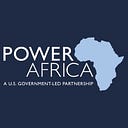Developing Mauritania’s Natural Gas Potential
Mauritania’s predominant power generation — and much of the Sahel region of West Africa — is heavy fuel oil, a traditional petroleum-based fossil fuel and a primary contributor to climate change. Combustion of heavy fuel oil results in the highest amount of carbon dioxide emissions of any fuel source with the exception of coal.
In Mauritania and across West Africa, Power Africa is partnering with governments to support their interest in moving away from these kinds of fuels, pivoting towards more efficient energy sources.
Since 2022, Power Africa has been working closely with the Ministry of Energy of Mauritania to inform the Ministry’s data-based decision-making in moving to cleaner energy. The Power Africa team has focused on gas-to-power strategies through transaction advisory assistance, to support the government in exploring and developing the country’s natural gas opportunities. While natural gas is a non-renewable energy source, it serves as a bridge to cleaner energy solutions. Natural gas is cleaner and more efficient than heavy fuel oil and produces up to 30 percent less emissions.
Power Africa’s advisory assistance to the Ministry began with data analysis and reporting of the gas sector, as well as technical guidance. Power Africa’s technical reporting concluded that a switch to cleaner and more affordable gas in the country would have a significant positive impact.
Today, it costs between USD 17 cents and 19 cents to produce a kWh of electricity in Mauritania using heavy fuel oil. A switch to gas could bring that cost down to between 12 to 15 cents per kWh. This represents about a 24 percent savings under normal to somewhat high electricity demand scenarios. An increased demand for electricity could see further potential savings of around 44 percent by using gas, which would cost about 11 cents per kWh.
In addition to the cost savings, there is also a significant environmental benefit. By converting existing power facilities from heavy fuel oil to gas, carbon dioxide emissions could be reduced by around 105,000 tons per year, a reduction of about 22 percent, equivalent to taking roughly 25,000 cars off the road.
Following the results of the data analysis, the Power Africa team worked with the Ministry to develop tailored plans and solutions. The first opportunity was using gas at various existing power sites, including a 180 MW power plant facility in the capital city Nouakchott. The plant is currently burning heavy fuel oil, and our studies have shown it could be successfully converted to use gas. Additionally, the development of a new and more efficient combined power plant, in the same location at Nouakchott, is also under consideration. A third option includes setting up a new combined generation facility called Ndiago in southern Mauritania closer to the gas fields.
Power Africa has been instrumental in this planning phase, assisting in reviewing the logistics and transportation infrastructure needed to use offshore gas facilities. Power Africa technical advisors also helped explore potential storage chain opportunities for this facility. This comprehensive has positioned the country well to make the switch to cleaner energy sources.
Power Africa’s assessments determined that Mauritania’s own gas fields could support this venture. For example, the current Greater Tortue Ahmeyim, an offshore Liquefied Natural Gas (LNG) project, located on the border of Mauritania and Senegal, is already under development.
In April 2024, equipped with this data, the Government of Mauritania took a significant step and signed a new agreement to exploit the Banda and Tevet fields. The agreement also includes the construction of a new power station and creating gas transport infrastructure. This will result in a total investment of more than USD 1 billion. The ultimate goal of this project is to replace heavy fuel oil with natural gas in the existing 180 MW Nouakchott Nord power plant, and to supply an entirely new 120 MW gas power plant.
“The signing of this agreement represents an important step,” Minister of Petroleum, Mines and Energy Nani Ould Chrougha said in an official statement.
Beyond gas-to-power strategies, Power Africa has also been working with Mauritania through Desert to Power, an African Development Bank (AfDB) initiative, to support Sahelian countries to address energy poverty in the region. Desert to Power aims to harness the power of the sun to generate an additional ten gigawatts of solar power plants and to connect 250 million people to electricity. Power Africa is playing a key role in this initiative, holding a seat on the AfDB’s Desert to Power Steering Committee.
Utilizing its network of partnerships via Desert to Power, Power Africa has been able to support various electrification projects in the country including the Enhancing Productive and Energy Investments for Rural Sustainable Development in Mauritania (RIMDIR) project, that will provide access to electricity to 27,000 people in underserved regions; and the Mauritania-Mali 225 kV Electricity Interconnection and Solar Power Development Project that aims to construct a 1,373-kilometer 225 kV double circuit transmission network between Mali and Mauritania, build a 50 MW solar power plant, and extend the distribution networks to connect 100,000 households to electricity in the two countries.
In 2023, Power Africa assisted Mauritania synchronize its power networks with those of ECOWAS countries through the West African Power Pool.
Power Africa will continue to work with Mauritania and other countries in the region in their journey to strengthen and expand energy access and power economic growth.
